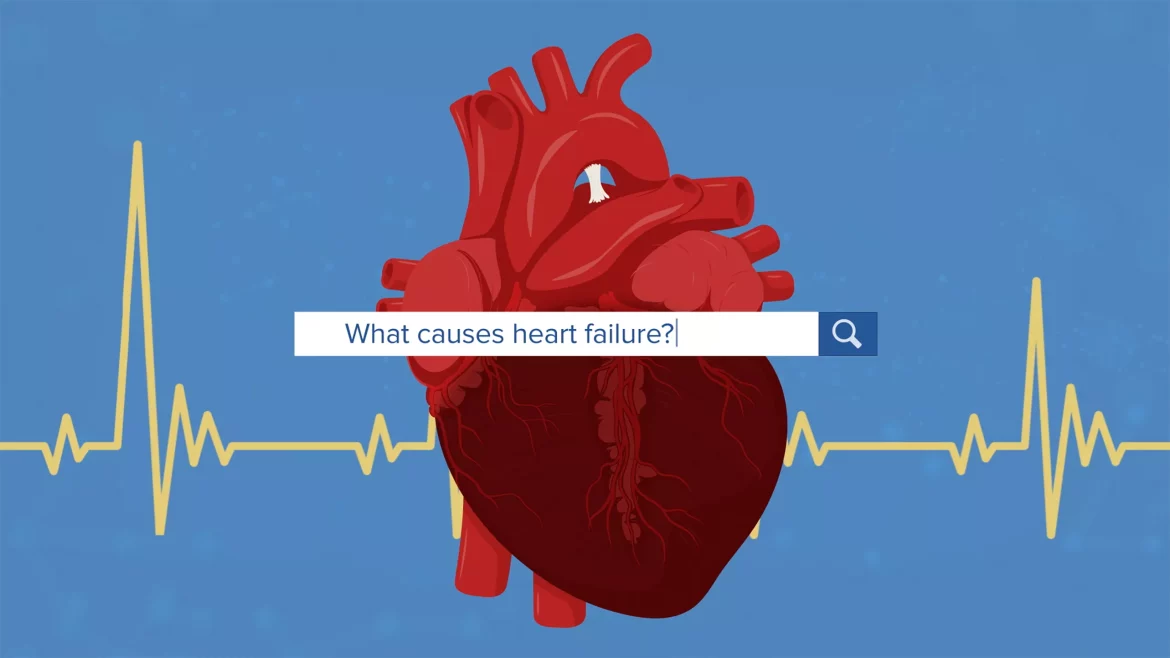Right heart failure, also referred to as right-sided heart failure, is a clinical condition where the right ventricle of the heart loses its ability to pump efficiently. This failure leads to a specific set of symptoms and physical findings that arise from the back-up of blood in the venous system, which primarily affects the liver, abdomen, and lower extremities. Understanding the most common symptom of right heart failure is crucial for early diagnosis and effective management. This article will delve into the pathophysiology of right heart failure, the most common symptom associated with this condition, and the implications for clinical practice.
Understanding Right Heart Failure
The heart is divided into two distinct functional units: the left side and the right side. Each side consists of an atrium and a ventricle. The right heart comprises the right atrium and right ventricle, handling venous blood from the systemic circulation and pumping it to the lungs for oxygenation. Right heart failure occurs when the right ventricle is unable to perform this function effectively.
Pathophysiologically, right heart failure can result from intrinsic cardiac disorders, such as right ventricular infarction or cardiomyopathies, or from extrinsic pressures such as pulmonary hypertension, which increases the load on the right ventricle. This increased workload can lead to ventricular dilation and weakness, ultimately culminating in heart failure.
See Also: Is There Any Treatment for Congestive Heart Failure
Clinical Manifestations of Right Heart Failure
Right heart failure leads to a series of symptoms that typically stem from the inability of the right ventricle to pump blood effectively into the pulmonary circulation. The ensuing congestion in the systemic venous system manifests through several clinical signs and symptoms. These include:
Jugular Venous Distension (JVD): Elevated pressure in the jugular veins, visible as bulging neck veins.
Hepatomegaly: Enlargement of the liver due to venous congestion.
Ascites: Accumulation of fluid in the abdominal cavity.
Peripheral Edema: Swelling of the legs and ankles due to fluid accumulation.
Fatigue and Weakness: Due to decreased cardiac output and reduced delivery of oxygen to tissues.
Among these, one symptom stands out both for its prevalence and its diagnostic significance.
The Most Common Symptom: Peripheral Edema
Peripheral edema, particularly the swelling of the legs and feet, is the most common and often the initial symptom of right heart failure. This symptom arises due to the inability of the right heart to pump blood effectively, leading to an increase in the pressure in the veins that return blood to the heart. The increased venous pressure causes fluid to leak out of the veins and into the surrounding tissues, leading to swelling.
Pathophysiology Behind Peripheral Edema
The mechanism of peripheral edema in right heart failure is primarily linked to the concept of hydrostatic pressure. As the right ventricle fails, it leads to an increase in venous pressure, which in turn elevates the hydrostatic pressure in the capillaries. When this pressure exceeds the oncotic pressure (which normally helps retain fluid within the blood vessels), fluid escapes into the interstitial spaces, causing edema.
Assessment And Diagnostic Significance
The presence of peripheral edema is not exclusive to right heart failure and can occur in other conditions such as renal failure, liver disease, and chronic venous insufficiency. However, in the context of other symptoms of right heart failure and specific clinical findings, peripheral edema becomes a pivotal diagnostic clue. Its assessment typically involves physical examination, where the extent and nature of the swelling are evaluated, often along with investigations to measure venous pressure and cardiac function.
see also: Treatment of Shortness of Breath in Heart Failure
Management Implications
The management of peripheral edema in right heart failure focuses on improving the pumping efficiency of the right ventricle and reducing venous congestion. This typically involves the use of diuretics to remove excess fluid, medications to reduce the workload on the heart, and in some cases, interventions to correct the underlying cause of the increased right ventricular load, such as pulmonary hypertension.
Conclusion
Right heart failure is a complex cardiac condition with a distinct clinical presentation. Among its various symptoms, peripheral edema stands out as the most common and often initial symptom. Recognizing this symptom in the context of right heart failure is crucial for timely and effective management. Effective treatment not only addresses the symptom but also aims at the underlying causes of right ventricular dysfunction, highlighting the importance of a comprehensive approach to diagnosis and management. Through such strategies, the prognosis for patients with right heart failure can be significantly improved, enhancing quality of life and reducing morbidity and mortality associated with this challenging cardiac condition.


